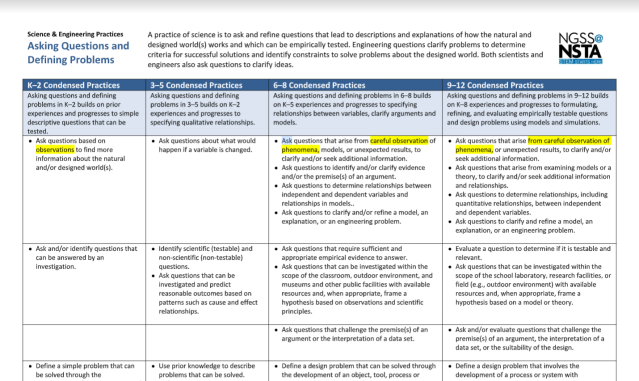My guess is that you became a science teacher because you love learning, you love working with kids, and you love science. Loving science means you are probably a question-asker.
Today’s question: “How do I grow as an educator and work to continually create improved classroom experiences to honor those students I love?
Today’s Answer: Blogging

This is an invitation to consider joining us in the #Sci4allSs Blog Project taking place on Twitter at #Sci4allSs (Science for all students).
We would like to bring people together across states to share our thinking and learning around A Framework for K-12 Science Education and/or Next Generation Science Standards. Implementation of this contemporary research will lead to great student achievement and progress towards the goal of new state and national 3D standards: depth of understanding through the three dimensions of science and engineering practices, disciplinary core ideas, and crosscutting concepts. We call this thinking and acting like a scientist. True integration of the 3 dimensions to explain phenomena and solve problems, will require a collaborative effort, collective conversation, and individual reflection. Blogging is one way to support this effort.
Why should we blog?
Reflective Thinking
Blogging gives you a platform for reflective thinking (writing that we do for ourselves to think through things). This clarification of our thinking helps us improve our practice by what I call reflection into action. My reflections always move me forward in some way to the next steps mode, leading to my personal professional growth.

Collective Conversation
By sharing your blog, you are making your thinking visible to others which supports them on the path of understanding, inspires reflection and revision of thinking. Sharing your blog enables you to get feedback, affirmation, and a new lens into your classroom from others. When you read and comment on the blog posts of others, you are also gaining great ideas and resources to enhance your own understanding and curate creative and innovative ideas for your classroom.

Getting Started Tips
Blogging is about the journey of reflection and collective conversation. It is not about perfectionism. Every teacher has amazing things to share from their experience as a learner and a classroom leader. Please consider sharing any 3D/NGSS reflections.
Some sample ideas:
- your classroom story
- your ideas and reflections
- resources you are finding useful in implementing the Framework or new standards.
- how you are utilizing technology to teach the three dimensions.
- your PLC or PLN story
- responses to something you have read or heard or conversed around (like in #NGSSchat 😀 )
- things you try that may or may not have worked
- ANYTHING you would like to clarify thinking around. If it helps you, it will help others.
Blog Posting Suggestions:
- Create a blog site using platforms like WordPress.com or blogger.com
- Create a blog post and send the url link to #Sci4allSs and #NGSSchat on Twitter
- Commit to trying to post your first blog (or first blog of 2019).
- Commit to trying to comment and/or repost/retweet the blogs of others
Great website for teacher blogging tips
http://www.edutopia.org/blog/start-teacher-blog-tips-resources-matt-davis
Blogging is about being part of a conversation. Please consider becoming part of this global conversation around great science teaching and learning. Educator voices need to be shared and heard as we work towards shifting science education and preparing students for this 21st Century world. All stakeholders (educators, parents, students) need to have a seat at the table about translating NGSS into classroom instruction during implementation. As professionals and stakeholders in NGSS implementation, sharing our teaching and learning reflections is key to advancing science education.
For a Blog Coach consider the National Blogging Collaborative.
Contact me for more information:
email: tdishelton@gmail.com
Twitter: @tdishelton
Blog: tdishelton.wordpress.com
website: NGSSPLN.com








